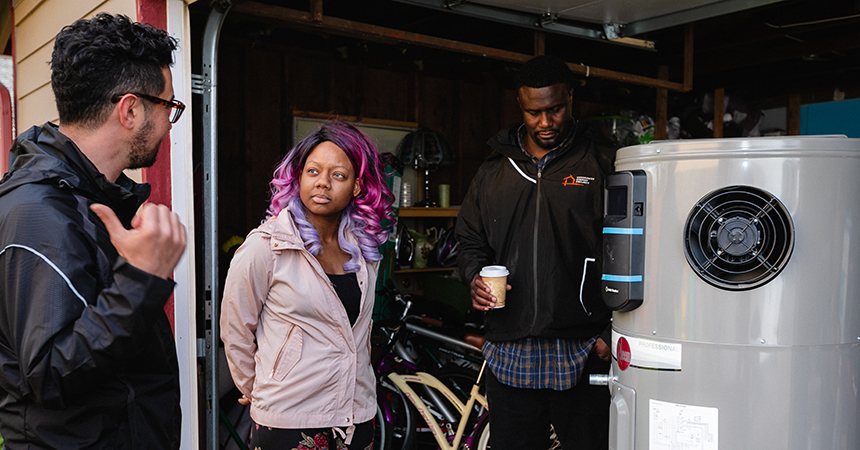
The killing of George Floyd and ensuing protests have brought America’s history of systemic racism to the forefront of our national dialogue. As a public service institution, we at Energy Trust recognize our role in perpetuating systems of inequity.
This is the second in a series of blog posts looking at racial disparities in the energy industry. Read the first post on negative health effects for Black Americans here.
Black Americans, more than any other racial group in the U.S., are more likely to experience energy insecurity, or the inability to adequately meet their energy needs, and are more likely to spend a larger percentage of income on energy costs than Americans overall.
A 2016 report from the American Council for an Energy-Efficient Economy (ACEEE) and the Energy Efficiency for All coalition found on average, Black and white households paid similar utility bills, but the median energy costs for Black households were 5.4% of household income compared with 3.3% for white households.
How did we get here? “The fundamental causes of chronic energy insecurity are rooted in socioeconomic disadvantage as determined by race, income, educational level, position within the life course, and medical conditions that affect energy needs and dependency,” wrote the authors of 2019’s “Energy, Poverty, and Health in Climate Change: A Comprehensive Review of an Emerging Literature.”
Energy burden is the percentage of household income that goes to energy costs. High energy burdens—that is 6% or higher—put people at risk of falling behind on payments and being disconnected from service due to nonpayment. Black Americans are more likely to have their electricity shut off compared with white Americans with comparable income.
A 2017 report from the NAACP on utility shut-off policies said when people are forced to choose between keeping their heat on and paying for other basic needs like food and health care, high energy costs can represent “a significant health hazard.”
In Oregon, people of color were already more likely to have high energy burdens, according to Oregon Housing and Community Services. The coronavirus pandemic has only made things worse, with some utilities reporting double-digit growth in the percentage of accounts 30 days past due. (In response to the pandemic, Oregon’s investor-owned electric and natural gas utilities suspended disconnections.)
Energy efficiency improvements that lower costs can provide much-needed relief to families with high energy burdens. The ACEEE report said if low-income housing was made as efficient as the average U.S. home, that would eliminate 42% of the excess energy burden for Black households.
Energy Trust already offers larger incentives for income qualified customers through our Savings Within Reach and new Solar Within Reach programs, but that’s not enough. We’ve committed to serving more people of color in our energy efficiency and renewable energy programs through increased outreach and partnerships with local nonprofits.
